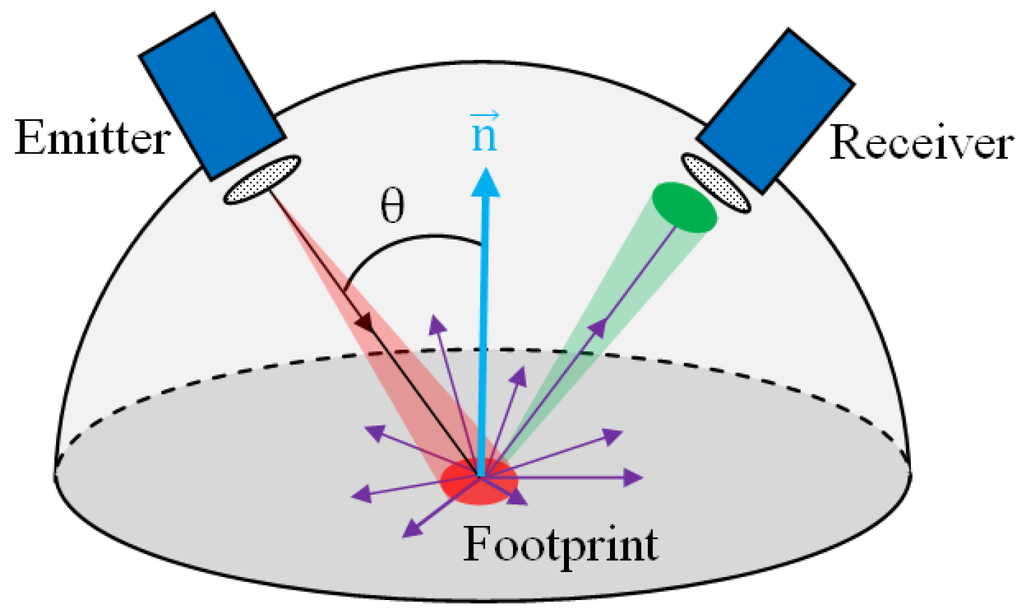Lambert’s Cosine Law :-a cornerstone in the field of optics, provides invaluable insights into the distribution of light on surfaces. This exploration takes us on a journey through the historical context,
fundamental principles, and real-world applications of Lambert’s Cosine Law, unraveling the complexities of light behavior.
Historical Origins: Lambert’s Cosine Law
Johann Lambert, an 18th-century Swiss mathematician and physicist, introduced Lambert’s Cosine Law in 1760. This law emerged as part of his groundbreaking work in photometry and optics, offering a mathematical description of how light interacts with surfaces.
Lambert’s insights laid the foundation for understanding how illumination varies across different angles and orientations.
The Essence of Lambert’s Cosine Law: Light Distribution Unveiled
Lambert’s Cosine Law describes how the intensity of light falling on a surface changes with the angle of incidence. It asserts that the radiant intensity of light on a perfectly diffusing surface is directly proportional to the cosine of the angle between the incident light and the normal to the surface. Mathematically, Lambert’s Cosine Law is expressed as:
�=�0⋅cos(�)
Here, � is the intensity of light on the surface, �0 is the intensity of the incident light, and � is the angle between the incident light and the normal to the surface.
Practical Applications: Illuminating Surfaces in the Real World
Lambert’s Cosine Law finds widespread application in various fields, particularly in lighting design, computer graphics, and remote sensing. In architectural lighting, understanding how light is distributed on different surfaces helps designers create aesthetically pleasing and functionally efficient spaces. In computer graphics, Lambert’s Law contributes to realistic rendering by simulating the way light interacts with surfaces.
Beyond Perfect Diffusers: Lambertian Reflection and Absorption
While Lambert’s Cosine Law is based on the assumption of a perfectly diffusing surface, its principles extend to Lambertian reflection and absorption. Lambertian surfaces exhibit uniform reflection or absorption properties regardless of the viewing angle, providing a practical approximation for various materials in real-world scenarios.

Lambertian Reflectance Models
In remote sensing, Lambertian reflectance models play a crucial role in interpreting satellite and aerial imagery. These models, based on Lambert’s Cosine Law, aid in understanding how different surfaces reflect light, influencing applications in agriculture, environmental monitoring, and urban planning.
Challenges and Limitations: Departures from Ideal Conditions
While Lambert’s Cosine Law offers a valuable framework for understanding light distribution, it has limitations, especially when dealing with non-ideal surfaces. Glossy or specular surfaces, which exhibit pronounced reflections, may deviate from Lambertian behavior. Researchers continue to explore more complex models to address these challenges and refine our understanding of light interaction with diverse surfaces.
Conclusion: Lambert’s Legacy in Illuminating Science and Design
As we delve into Lambert’s Cosine Law, we unveil a crucial aspect of optics that influences fields ranging from lighting design to remote sensing. Lambert’s luminary contributions have stood the test of time, shaping our understanding of light distribution on surfaces and influencing the way we design, visualize, and interpret the world around us. In the intricate dance of light and matter, Lambert’s Cosine Law remains a guiding principle, illuminating the path for scientific inquiry and practical applications.
लैम्बर्टियन परावर्तन मॉडल
रिमोट सेंसिंग में, लैम्बर्टियन परावर्तन मॉडल उपग्रह और हवाई इमेजरी की व्याख्या करने में महत्वपूर्ण भूमिका निभाते हैं। लैंबर्ट के कोसाइन कानून पर आधारित ये मॉडल यह समझने में सहायता करते हैं कि विभिन्न सतहें प्रकाश को कैसे प्रतिबिंबित करती हैं, कृषि, पर्यावरण निगरानी और शहरी नियोजन में अनुप्रयोगों को कैसे प्रभावित करती हैं।
चुनौतियाँ और सीमाएँ: आदर्श स्थितियों से प्रस्थान
जबकि लैम्बर्ट का कोसाइन कानून प्रकाश वितरण को समझने के लिए एक मूल्यवान रूपरेखा प्रदान करता है, इसकी सीमाएँ हैं, खासकर जब गैर-आदर्श सतहों से निपटते हैं। चमकदार या स्पेक्युलर सतहें, जो स्पष्ट प्रतिबिंब प्रदर्शित करती हैं, लैम्बर्टियन व्यवहार से विचलित हो सकती हैं। शोधकर्ता इन चुनौतियों का समाधान करने और विभिन्न सतहों के साथ प्रकाश संपर्क की हमारी समझ को परिष्कृत करने के लिए और अधिक जटिल मॉडल का पता लगाना जारी रखते हैं।
For More information visit web :-https://xeidea.com/
And news website:- https://lokprasang.com/

